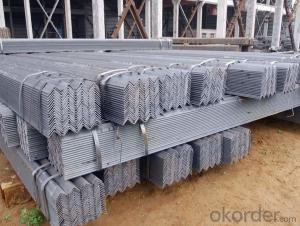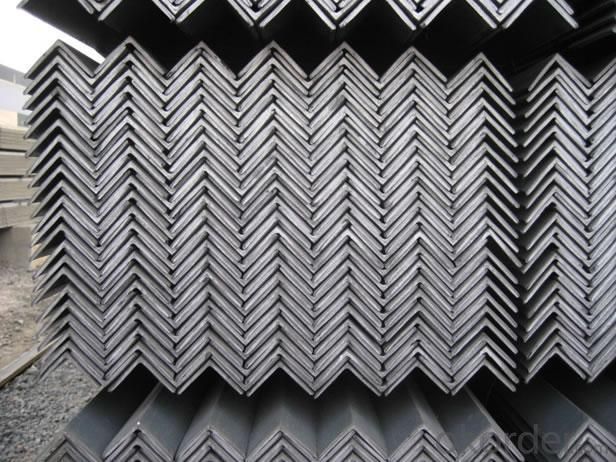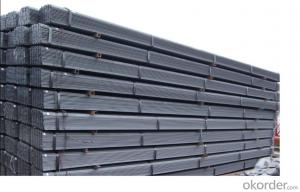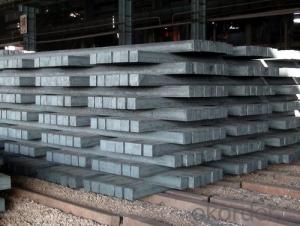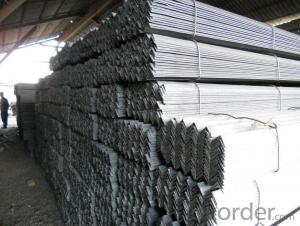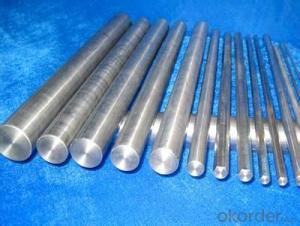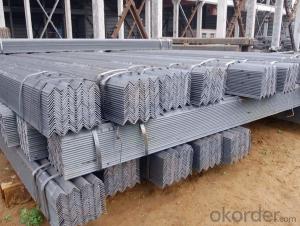Steel Unequal Angle 20-250MM GB Q235 Q345 Or Unequal Angle Steel
- Loading Port:
- Shanghai
- Payment Terms:
- TT OR LC
- Min Order Qty:
- 25 m.t.
- Supply Capability:
- 20000000 m.t./month
OKorder Service Pledge
OKorder Financial Service
You Might Also Like
Specification
Product Description:
OKorder is offeringUnequal Angle 20-250MM GB Q235 Q345 Or Unequal Angle Steel. Our supplier is a world-class manufacturer of steel, with our products utilized the world over. OKorder annually supplies products to European, North American and Asian markets. We provide quotations within 24 hours of receiving an inquiry and guarantee competitive prices.
Product Applications:
According to the needs of different structures, Angle can compose to different force support component, and also can be the connections between components. It is widely used in various building structures and engineering structures such as roof beams, bridges, transmission towers, hoisting machinery and transport machinery, ships, industrial furnaces, reaction tower, container frame and warehouse etc
Product Advantages:
OKorder's Steel Unequal Angle 20-250MM GB Q235 Q345 Or Unequal Angle Steel are durable, strong, and resist corrosion.
Main Product Features:
· Premium quality
· Prompt delivery & seaworthy packing (30 days after receiving deposit)
· Corrosion resistance
· Can be recycled and reused
· Mill test certification
· Professional Service
· Competitive pricing
Product Specifications:
Manufacture: Hot rolled
Grade: Q195 – 235
Certificates: ISO, SGS, BV, CIQ
Length: 6m – 12m, as per customer request
Packaging: Export packing, nude packing, bundled
Sizes: 25mm-250mm | ||||||||||||
a*t | ||||||||||||
25*2.5-4.0 | 70*6.0-9.0 | 130*9.0-15 | ||||||||||
30*2.5-6.6 | 75*6.0-9.0 | 140*10-14 | ||||||||||
36*3.0-5.0 | 80*5.0-10 | 150*10-20 | ||||||||||
38*2.3-6.0 | 90*7.0-10 | 160*10-16 | ||||||||||
40*3.0-5.0 | 100*6.0-12 | 175*12-15 | ||||||||||
45*4.0-6.0 | 110*8.0-10 | 180*12-18 | ||||||||||
50*4.0-6.0 | 120*6.0-15 | 200*14-25 | ||||||||||
60*4.0-8.0 | 125*8.0-14 | 250*25 | ||||||||||
FAQ:
Q1: Why buy Materials & Equipment from OKorder.com?
A1: All products offered byOKorder.com are carefully selected from China's most reliable manufacturing enterprises. Through its ISO certifications, OKorder.com adheres to the highest standards and a commitment to supply chain safety and customer satisfaction.
Q2: How do we guarantee the quality of our products?
A2: We have established an advanced quality management system which conducts strict quality tests at every step, from raw materials to the final product. At the same time, we provide extensive follow-up service assurances as required.
Q3: How soon can we receive the product after purchase?
A3: Within three days of placing an order, we will begin production. The specific shipping date is dependent upon international and government factors, but is typically 7 to 10 workdays.
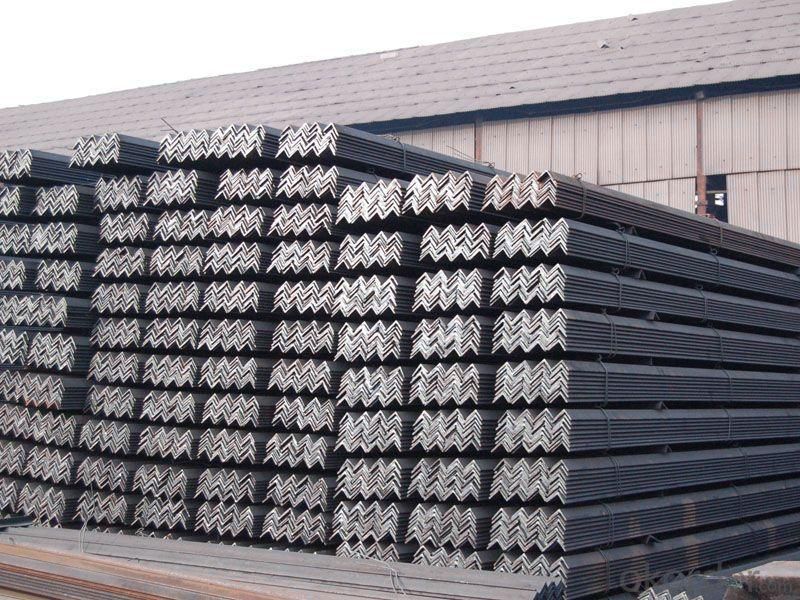
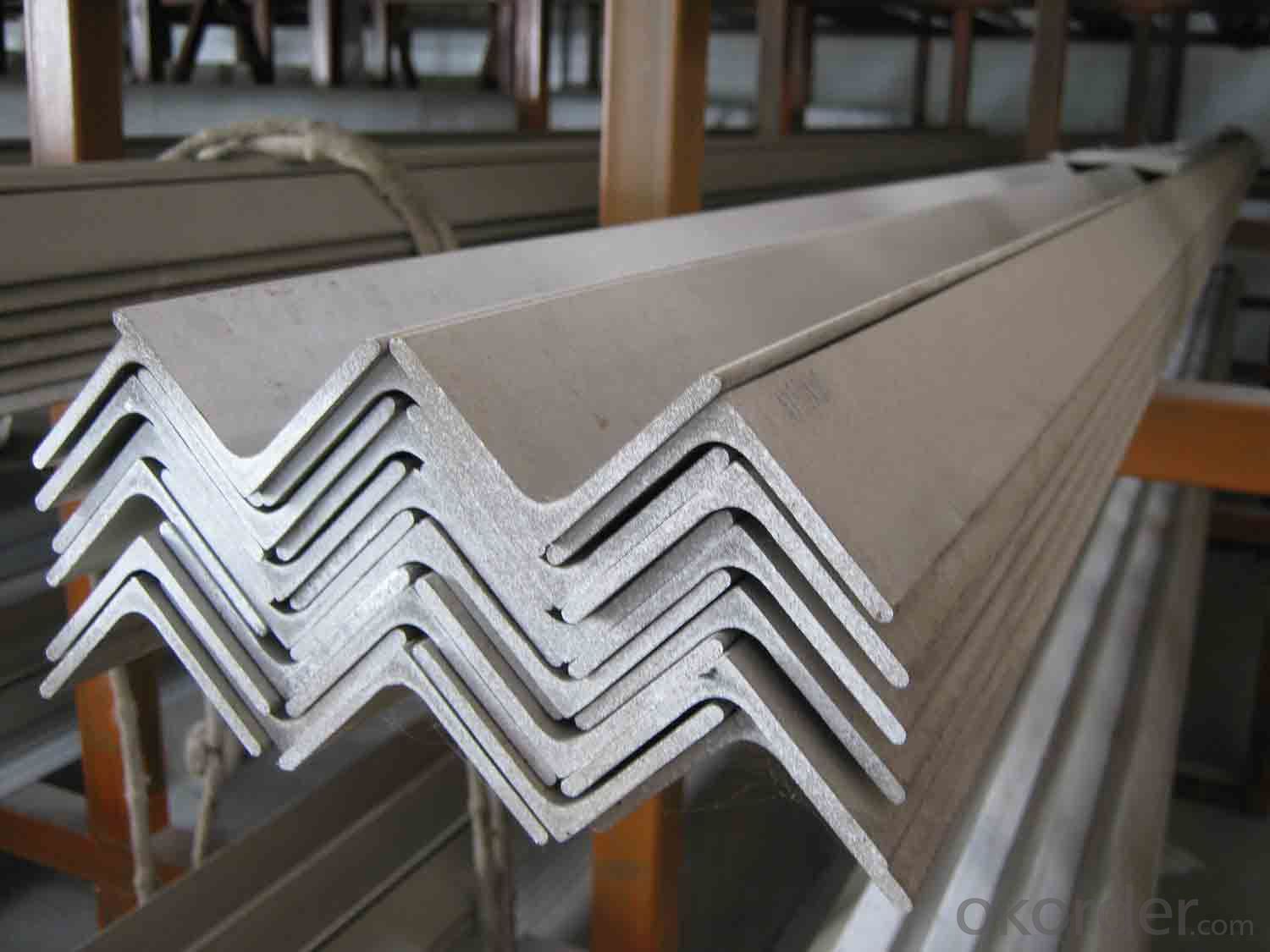
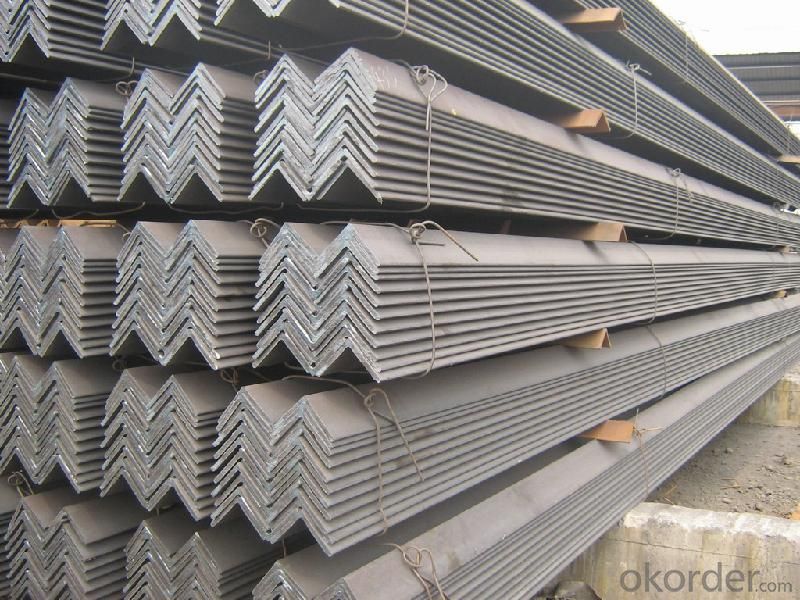
- Q: Can steel angles be used for machine guards?
- Yes, steel angles can be used for machine guards. Steel angles are commonly used in the construction industry for their strength and durability. They can be easily fabricated and installed to create a protective barrier around machinery, ensuring the safety of workers and preventing accidents. The versatility of steel angles allows them to be customized to fit various machine sizes and shapes. Additionally, steel angles offer good impact resistance and can withstand heavy loads, making them suitable for use in machine guarding applications.
- Q: How do steel angles contribute to the overall durability of a structure?
- Angle irons, also known as steel angles or L-shaped structural steel, play a crucial role in strengthening structures and improving their durability. These versatile components are commonly used in construction projects because they provide strength, stability, and support. To begin with, steel angles are designed to bear heavy loads and forces. They evenly distribute the weight, preventing structural failures and ensuring the longevity of the building. This is especially important in situations where the structure is exposed to dynamic forces like wind, earthquakes, or heavy machinery. Furthermore, steel angles act as effective reinforcements in critical areas of a structure. They reinforce connections between different structural members, such as beams and columns, creating a strong framework. This reinforcement enhances the overall load-bearing capacity of the structure, allowing it to withstand greater loads without compromising its integrity. Moreover, steel angles offer lateral stability to buildings. By diagonally connecting various components, they resist horizontal forces caused by wind or seismic activity. This lateral stability is vital in preventing the structure from swaying or collapsing under extreme conditions, ensuring the safety of occupants. Additionally, steel angles have high resistance to corrosion, a common cause of structure deterioration. Using galvanized or stainless steel angles significantly reduces the risk of rusting and subsequent degradation. This corrosion resistance contributes to the long-term durability of the structure, reducing maintenance costs and extending its lifespan. In conclusion, steel angles are vital for enhancing the overall durability of structures due to their ability to withstand heavy loads, provide reinforcement, offer lateral stability, and resist corrosion. By incorporating steel angles into construction projects, engineers can ensure the structural integrity and longevity of buildings, ultimately creating safer and more durable spaces.
- Q: What are the different types of steel angle connections?
- There are several different types of steel angle connections commonly used in construction and engineering projects. Some of the main types include: 1. Welded connections: This is one of the most common and traditional methods of connecting steel angles. In this type of connection, the two angles are joined together by welding them at the point of contact. Welded connections provide excellent strength and rigidity, making them suitable for heavy-duty applications. 2. Bolted connections: Bolted connections involve using bolts and nuts to fasten the steel angles together. This method allows for easy disassembly and reassembly of the structure if needed. Bolted connections are often used in situations where frequent adjustments or modifications are required. 3. Riveted connections: Riveted connections involve using rivets to join the steel angles together. Rivets are metal fasteners that are inserted through pre-drilled holes in the angles and then hammered or pressed to secure them. Riveted connections were widely used in older structures and are still occasionally used in certain applications today. 4. Clipped connections: Clipped connections are a type of bolted connection where the angles are connected using special clip angles. These clip angles are bolted to the main angles, providing a secure and rigid connection. Clipped connections are commonly used in steel trusses and frameworks. 5. Gusset plate connections: Gusset plate connections involve using a steel plate, known as a gusset plate, to connect two or more steel angles. The gusset plate is usually bolted or welded to the angles, providing additional strength and stability. This type of connection is often used in structures subjected to heavy loads or dynamic forces. Each type of steel angle connection has its own advantages and disadvantages, and the choice of connection method depends on various factors such as the load requirements, structural design, and project specifications.
- Q: Can steel angles be used for manufacturing machinery?
- Indeed, the utilization of steel angles is viable for the production of machinery. In the construction sector, steel angles are frequently employed as structural elements owing to their robustness, resilience, and cost-effectiveness. In the realm of machinery manufacturing, steel angles find utility in a multitude of ways, encompassing framing, support structures, brackets, and mounting components. They bestow stability and rigidity upon the machinery, thereby ensuring its structural integrity. Moreover, steel angles facilitate the welding, bolting, or riveting processes with ease, permitting flexible and efficient fabrication techniques. By and large, steel angles represent a versatile and dependable choice for the manufacturing of machinery.
- Q: Can steel angles be used as lintels or supports for openings?
- Yes, steel angles can be used as lintels or supports for openings. Steel angles are commonly used in construction to distribute the load from above openings such as windows and doors, providing structural support and stability. They are strong, durable, and can be easily customized to fit the required dimensions, making them a suitable choice for lintels or supports in various construction projects.
- Q: 304 what does angle iron stand for?
- 304 stainless steel, consisting of 18Cr-9Ni, is the most widely used stainless steel and heat resistant steel. Used in food production equipment, chemical equipment, nuclear energy, etc..
- Q: How do you clean and maintain steel angles?
- To ensure the cleanliness and maintenance of steel angles, a few essential materials and some simple steps are required. The following guide will assist you in carrying out the process: 1. Collect the necessary materials: You will require a soft cloth or sponge, mild detergent or soap, warm water, a bucket, and a microfiber cloth or towel for drying. 2. Begin by preparing a cleaning solution: Combine a small amount of mild detergent or soap with warm water in a bucket. Harsh chemicals or abrasive cleaners should be avoided, as they can harm the steel surface. 3. Immerse the soft cloth or sponge into the cleaning solution and squeeze out any excess liquid. It is important for the cloth to be damp, not saturated. 4. Delicately wipe the steel angles with the damp cloth or sponge. Ensure that you cover the entire surface, including the crevices and corners. In the case of stubborn stains or dirt, apply slightly more pressure, but avoid scrubbing too vigorously to prevent scratches. 5. Rinse the cloth or sponge with clean water and eliminate any soap residue from the steel angles. 6. Once the cleaning process is complete, use a microfiber cloth or towel to thoroughly dry the steel angles. This step is crucial to prevent the formation of water spots or rust. 7. For regular maintenance, a stainless steel cleaner or polish can be utilized. Apply a small amount of the cleaner onto a clean cloth and gently rub it onto the steel angles, following the instructions provided by the manufacturer. This will aid in restoring shine and safeguarding the steel surface. 8. Refrain from using abrasive materials such as steel wool or scouring pads, as they can cause scratches on the steel angles. Moreover, keep acidic substances or chemicals away from the steel, as they can induce corrosion. 9. It is also advisable to periodically inspect the steel angles for any indications of rust or damage. If any rust spots are noticed, a rust remover or stainless steel cleaner specifically designed for rust removal can be used. Carefully follow the instructions provided by the product and ensure that the angles are thoroughly dried afterwards. By adhering to these steps, you can effectively clean and maintain steel angles, ensuring their excellent condition for years to come.
- Q: Can steel angles be used in machine frames?
- Yes, steel angles can be used in machine frames. Steel angles are commonly used in construction and engineering projects due to their strength and durability. They can provide structural support and stability to machine frames, ensuring their stability and resistance to loads and vibrations. Steel angles can be welded or bolted together to form rigid and stable frames, making them an ideal choice for machine frames that require high strength and stability. Additionally, steel angles are readily available in various sizes and thicknesses, allowing for flexibility in design and customization of machine frames to meet specific requirements.
- Q: What are the different methods for protecting steel angles from corrosion?
- There are several methods available for protecting steel angles from corrosion. 1. Galvanization: Galvanization is a widely used method where a layer of zinc is applied to the surface of the steel angle. This zinc layer acts as a sacrificial anode, meaning it corrodes first before the steel, protecting it from rust. This method provides excellent protection and is commonly used in outdoor applications such as construction and infrastructure. 2. Paint coating: Applying a paint coating to the steel angle can provide an effective barrier against corrosion. The paint forms a protective layer that prevents moisture and oxygen from reaching the steel surface, thus inhibiting the corrosion process. It is important to use high-quality, corrosion-resistant paints for long-term protection. 3. Powder coating: Powder coating involves applying a dry powder to the steel angle which is then cured at high temperatures. This creates a hard, durable, and protective layer on the surface. Powder coating provides an attractive finish and excellent resistance to corrosion, making it suitable for both indoor and outdoor applications. 4. Stainless steel: Using stainless steel angles is another method for protecting against corrosion. Stainless steel contains chromium, which forms a passive oxide layer on the surface that acts as a protective barrier against corrosion. This makes stainless steel highly resistant to rust, making it ideal for applications where corrosion is a concern. 5. Cathodic protection: Cathodic protection is a technique used to protect steel angles by making them the cathode in a corrosion cell. This is achieved by connecting the steel angle to a sacrificial anode, such as zinc or aluminum, or by using impressed current systems. By doing so, the anode corrodes instead of the steel, effectively protecting it from corrosion. It is worth noting that the selection of the appropriate method for protecting steel angles from corrosion depends on various factors such as the intended application, environmental conditions, and budget constraints. Consulting with corrosion experts and considering the specific requirements of the project is advisable to ensure the most suitable method is chosen.
- Q: What is the typical length of a steel angle?
- The typical length of a steel angle can vary depending on the specific application or project requirements. However, standard lengths for steel angles often range from 10 to 20 feet.
Send your message to us
Steel Unequal Angle 20-250MM GB Q235 Q345 Or Unequal Angle Steel
- Loading Port:
- Shanghai
- Payment Terms:
- TT OR LC
- Min Order Qty:
- 25 m.t.
- Supply Capability:
- 20000000 m.t./month
OKorder Service Pledge
OKorder Financial Service
Similar products
Hot products
Hot Searches
